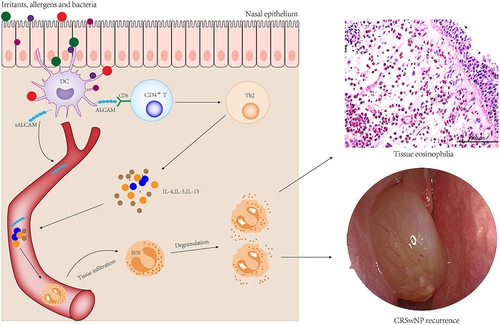Figures & data
Table 1 The Demographic and Clinical Features of Participants
Table 2 Relationship Between Serum ALCAM and Clinical Variables in CRSwNP Patients
Table 3 Binary Logistic Regression Analysis of Factors Associated with eCRSwNP
Figure 1 Comparison of serum ALCAM levels between CRSwNP patients and HCs. (A) ALCAM levels were significantly elevated in the CRSwNP group than the HC group. (B) Serum ALCAM levels were markedly enhanced in the eCRSwNP group than the neCRSwNP and HC groups.
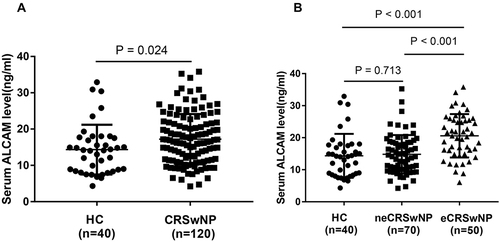
Figure 2 The ROC curves of potentially predictive biomarkers for discriminating eCRSwNP. (A) serum ALCAM; (B) peripheral eosinophil percentage.
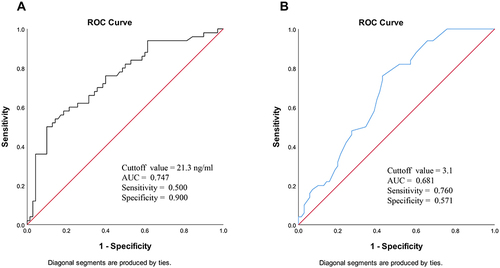
Table 4 Demographic Characteristics Between Primary and Recurrent CRSwNP Patients
Table 5 Binary Logistic Regression Analysis of Factors Associated with the Recurrence of CRSwNP
Figure 3 The serum ALCAM levels in the non-recurrent CRSwNP patients and the recurrent CRSwNP patients. (A) Serum ALCAM concentrations were elevated in the recurrent CRSwNP group than the non-recurrent CRSwNP group. (B) Serum ALCAM levels were significantly enhanced in the recurrent eCRSwNP group than the non-recurrent eCRSwNP and non-recurrent neCRSwNP groups.
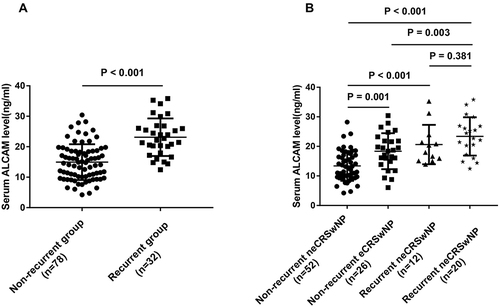
Figure 4 The ROC curve (A) and Kaplan-Meier survival analysis (B) for serum ALCAM level in the prediction of CRSwNP recurrence.
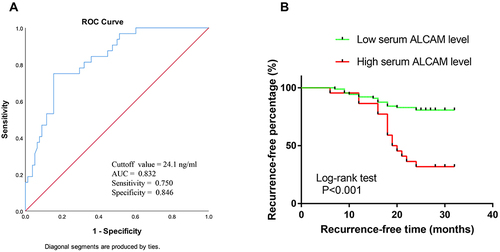
Figure 5 Comparison of ALCAM mRNA levels in the tissue of CRSwNP patients and HCs. (A) ALCAM mRNA expressions were elevated in the CRSwNP group than the HC group. (B) ALCAM mRNA levels were significantly increased in the eCRSwNP group than the neCRSwNP group. (C) no significant difference was observed in mRNA levels between the non-recurrent CRSwNP group and the recurrent CRSwNP group.
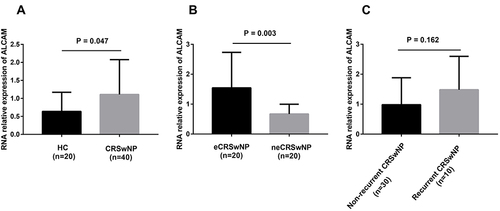
Figure 6 The ALCAM protein expression in the tissue based on IHC. Representative images of ALCAM staining from HCs (A and B), eCRSwNP patients (C and D) and neCRSwNP patients (E and F).
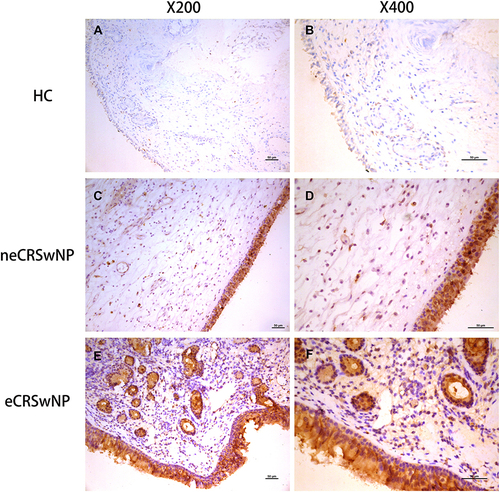
Figure 7 The ALCAM protein expression in the nasal polyps tissue based on IHC. Representative images of ALCAM staining from non-recurrent CRSwNP patients (A and B) and recurrent CRSwNP patients (C and D).
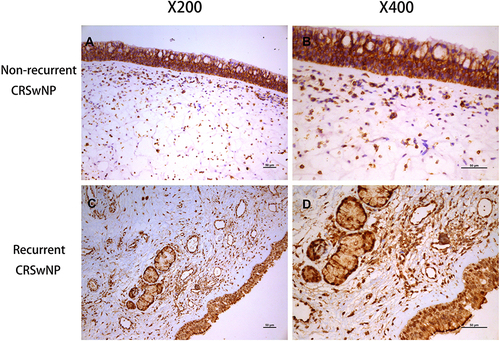
Figure 8 Quantitative analysis of ALCAM immunoreactivity in nasal poly and HC samples. (A) ALCAM positive cell number was significantly greater in the eCRSwNP group than the neCRSwNP and HC groups. (B) ALCAM positive cell number was significantly greater in the recurrent CRSwNP group than the non-recurrent CRSwNP group and.
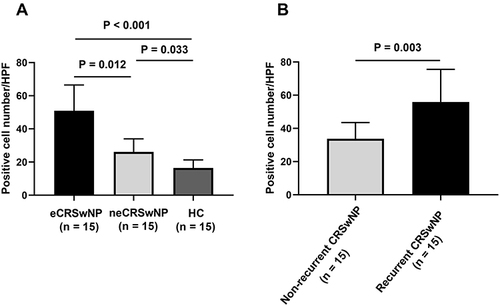
Figure 9 The ALCAM protein expression in the tissue based on WB. (A) WB images of ALCAM among eCRSwNP, neCRSwNP and HC groups. (B) WB images of ALCAM between the recurrent CRSwNP and non-recurrent CRSwNP groups. (C) comparison of ALCAM relative protein level among eCRSwNP, neCRSwNP and HC groups. (D) comparison of ALCAM relative protein level between the recurrent CRSwNP and non-recurrent CRSwNP groups.
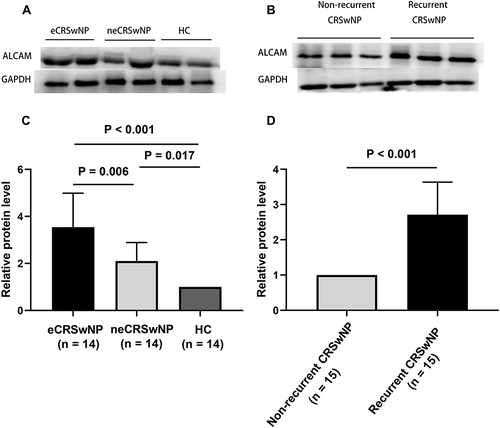
Figure 10 Hypothetical model showing association between ALCAM expression and eosinophil infiltration and recurrence in CRSwNP. On allergens derived from irritants and bacteria challenge, DCs were activated and the production of ALCAM was increased, releasing its soluble form (sALCAM). This promoted the ALCAM–CD6 interactions and enhanced Th2 immune responses, then induced the eosinophil tissue infiltration and aggravation of eosinophilic inflammation, resulting in tissue eosinophilia and recurrence in CRSwNP.
